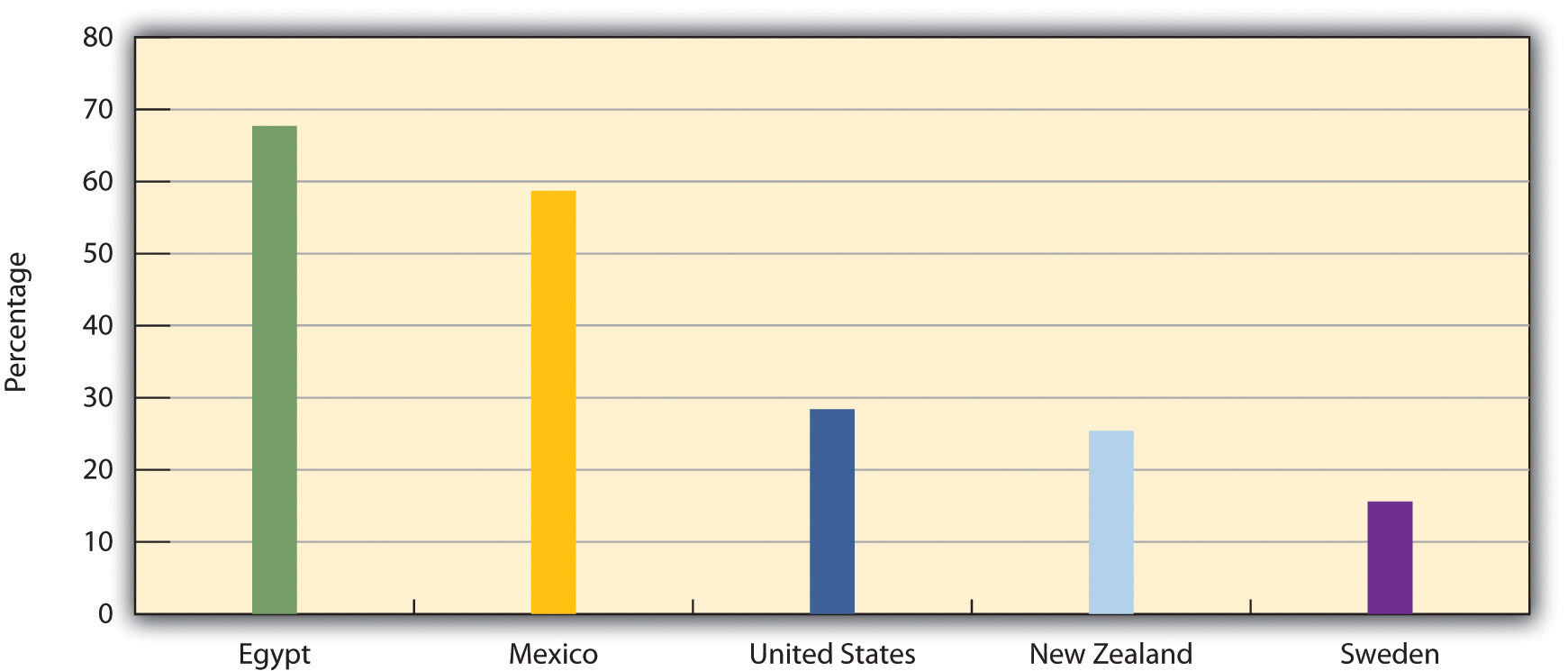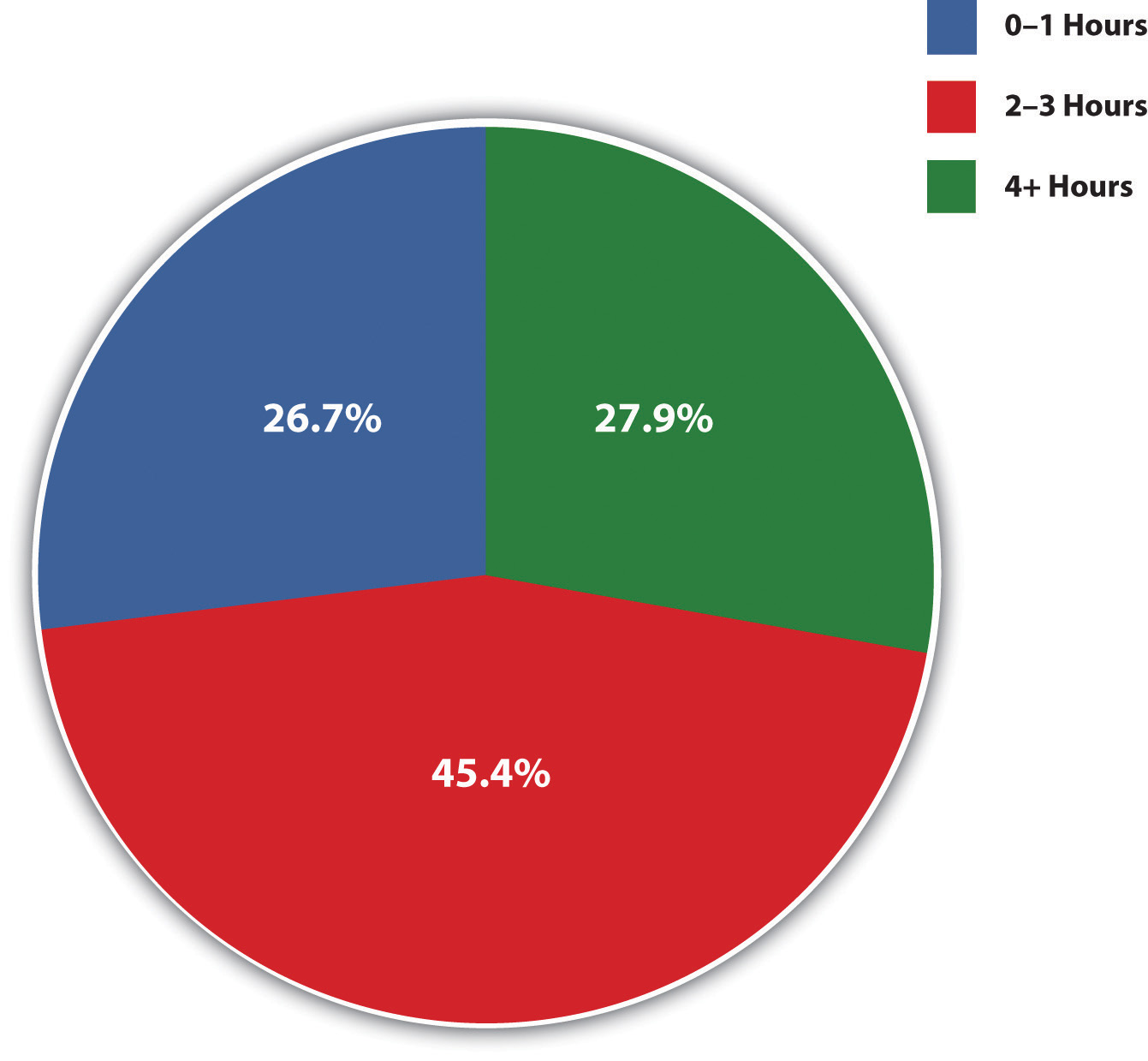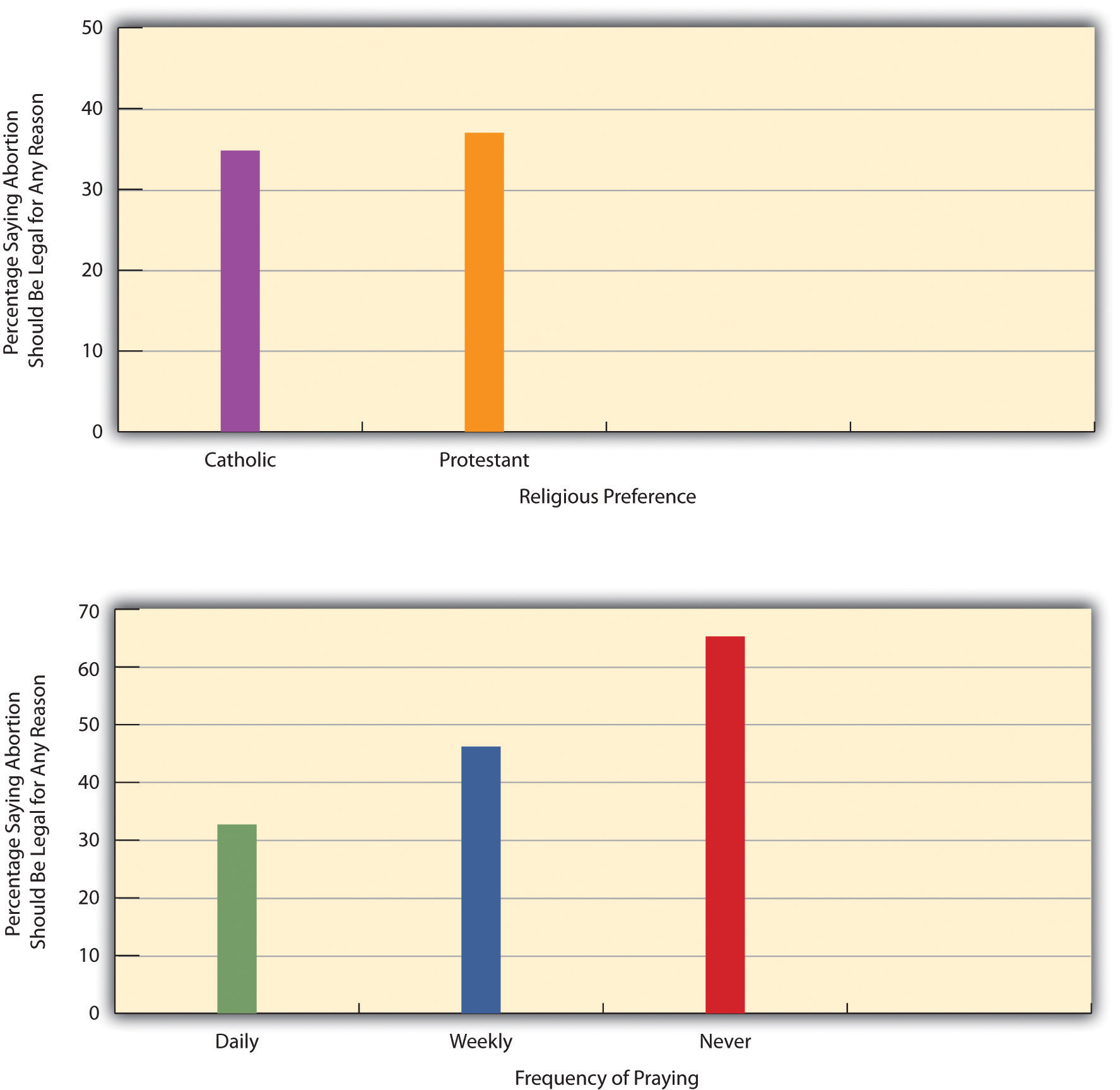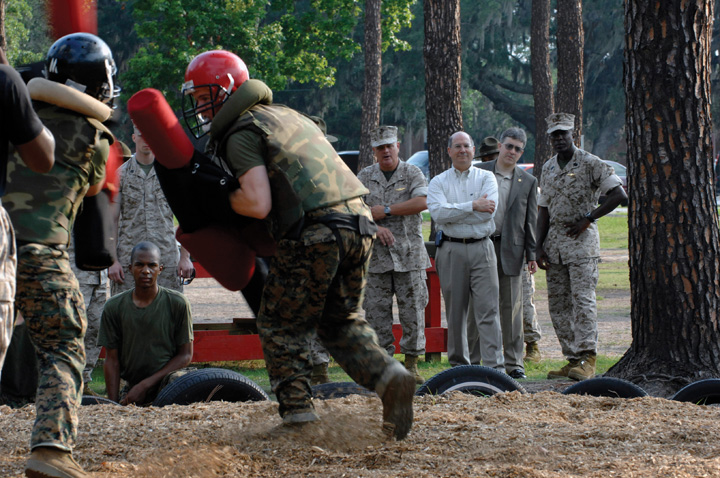5.3: Agents of Socialization
- Page ID
- 3481
\( \newcommand{\vecs}[1]{\overset { \scriptstyle \rightharpoonup} {\mathbf{#1}} } \)
\( \newcommand{\vecd}[1]{\overset{-\!-\!\rightharpoonup}{\vphantom{a}\smash {#1}}} \)
\( \newcommand{\id}{\mathrm{id}}\) \( \newcommand{\Span}{\mathrm{span}}\)
( \newcommand{\kernel}{\mathrm{null}\,}\) \( \newcommand{\range}{\mathrm{range}\,}\)
\( \newcommand{\RealPart}{\mathrm{Re}}\) \( \newcommand{\ImaginaryPart}{\mathrm{Im}}\)
\( \newcommand{\Argument}{\mathrm{Arg}}\) \( \newcommand{\norm}[1]{\| #1 \|}\)
\( \newcommand{\inner}[2]{\langle #1, #2 \rangle}\)
\( \newcommand{\Span}{\mathrm{span}}\)
\( \newcommand{\id}{\mathrm{id}}\)
\( \newcommand{\Span}{\mathrm{span}}\)
\( \newcommand{\kernel}{\mathrm{null}\,}\)
\( \newcommand{\range}{\mathrm{range}\,}\)
\( \newcommand{\RealPart}{\mathrm{Re}}\)
\( \newcommand{\ImaginaryPart}{\mathrm{Im}}\)
\( \newcommand{\Argument}{\mathrm{Arg}}\)
\( \newcommand{\norm}[1]{\| #1 \|}\)
\( \newcommand{\inner}[2]{\langle #1, #2 \rangle}\)
\( \newcommand{\Span}{\mathrm{span}}\) \( \newcommand{\AA}{\unicode[.8,0]{x212B}}\)
\( \newcommand{\vectorA}[1]{\vec{#1}} % arrow\)
\( \newcommand{\vectorAt}[1]{\vec{\text{#1}}} % arrow\)
\( \newcommand{\vectorB}[1]{\overset { \scriptstyle \rightharpoonup} {\mathbf{#1}} } \)
\( \newcommand{\vectorC}[1]{\textbf{#1}} \)
\( \newcommand{\vectorD}[1]{\overrightarrow{#1}} \)
\( \newcommand{\vectorDt}[1]{\overrightarrow{\text{#1}}} \)
\( \newcommand{\vectE}[1]{\overset{-\!-\!\rightharpoonup}{\vphantom{a}\smash{\mathbf {#1}}}} \)
\( \newcommand{\vecs}[1]{\overset { \scriptstyle \rightharpoonup} {\mathbf{#1}} } \)
\( \newcommand{\vecd}[1]{\overset{-\!-\!\rightharpoonup}{\vphantom{a}\smash {#1}}} \)
\(\newcommand{\avec}{\mathbf a}\) \(\newcommand{\bvec}{\mathbf b}\) \(\newcommand{\cvec}{\mathbf c}\) \(\newcommand{\dvec}{\mathbf d}\) \(\newcommand{\dtil}{\widetilde{\mathbf d}}\) \(\newcommand{\evec}{\mathbf e}\) \(\newcommand{\fvec}{\mathbf f}\) \(\newcommand{\nvec}{\mathbf n}\) \(\newcommand{\pvec}{\mathbf p}\) \(\newcommand{\qvec}{\mathbf q}\) \(\newcommand{\svec}{\mathbf s}\) \(\newcommand{\tvec}{\mathbf t}\) \(\newcommand{\uvec}{\mathbf u}\) \(\newcommand{\vvec}{\mathbf v}\) \(\newcommand{\wvec}{\mathbf w}\) \(\newcommand{\xvec}{\mathbf x}\) \(\newcommand{\yvec}{\mathbf y}\) \(\newcommand{\zvec}{\mathbf z}\) \(\newcommand{\rvec}{\mathbf r}\) \(\newcommand{\mvec}{\mathbf m}\) \(\newcommand{\zerovec}{\mathbf 0}\) \(\newcommand{\onevec}{\mathbf 1}\) \(\newcommand{\real}{\mathbb R}\) \(\newcommand{\twovec}[2]{\left[\begin{array}{r}#1 \\ #2 \end{array}\right]}\) \(\newcommand{\ctwovec}[2]{\left[\begin{array}{c}#1 \\ #2 \end{array}\right]}\) \(\newcommand{\threevec}[3]{\left[\begin{array}{r}#1 \\ #2 \\ #3 \end{array}\right]}\) \(\newcommand{\cthreevec}[3]{\left[\begin{array}{c}#1 \\ #2 \\ #3 \end{array}\right]}\) \(\newcommand{\fourvec}[4]{\left[\begin{array}{r}#1 \\ #2 \\ #3 \\ #4 \end{array}\right]}\) \(\newcommand{\cfourvec}[4]{\left[\begin{array}{c}#1 \\ #2 \\ #3 \\ #4 \end{array}\right]}\) \(\newcommand{\fivevec}[5]{\left[\begin{array}{r}#1 \\ #2 \\ #3 \\ #4 \\ #5 \\ \end{array}\right]}\) \(\newcommand{\cfivevec}[5]{\left[\begin{array}{c}#1 \\ #2 \\ #3 \\ #4 \\ #5 \\ \end{array}\right]}\) \(\newcommand{\mattwo}[4]{\left[\begin{array}{rr}#1 \amp #2 \\ #3 \amp #4 \\ \end{array}\right]}\) \(\newcommand{\laspan}[1]{\text{Span}\{#1\}}\) \(\newcommand{\bcal}{\cal B}\) \(\newcommand{\ccal}{\cal C}\) \(\newcommand{\scal}{\cal S}\) \(\newcommand{\wcal}{\cal W}\) \(\newcommand{\ecal}{\cal E}\) \(\newcommand{\coords}[2]{\left\{#1\right\}_{#2}}\) \(\newcommand{\gray}[1]{\color{gray}{#1}}\) \(\newcommand{\lgray}[1]{\color{lightgray}{#1}}\) \(\newcommand{\rank}{\operatorname{rank}}\) \(\newcommand{\row}{\text{Row}}\) \(\newcommand{\col}{\text{Col}}\) \(\renewcommand{\row}{\text{Row}}\) \(\newcommand{\nul}{\text{Nul}}\) \(\newcommand{\var}{\text{Var}}\) \(\newcommand{\corr}{\text{corr}}\) \(\newcommand{\len}[1]{\left|#1\right|}\) \(\newcommand{\bbar}{\overline{\bvec}}\) \(\newcommand{\bhat}{\widehat{\bvec}}\) \(\newcommand{\bperp}{\bvec^\perp}\) \(\newcommand{\xhat}{\widehat{\xvec}}\) \(\newcommand{\vhat}{\widehat{\vvec}}\) \(\newcommand{\uhat}{\widehat{\uvec}}\) \(\newcommand{\what}{\widehat{\wvec}}\) \(\newcommand{\Sighat}{\widehat{\Sigma}}\) \(\newcommand{\lt}{<}\) \(\newcommand{\gt}{>}\) \(\newcommand{\amp}{&}\) \(\definecolor{fillinmathshade}{gray}{0.9}\)Objectives
- Identify five agents of socialization.
- Describe the major agents of socialization in American society.
- Describe good and bad aspects of the socialization these agents produce.
- Explain how each of these agents of socialization help to teach and influence people’s attitudes, and behaviors.
- Analyze the importance of family and education as social institutions in the United States.
- Explain how socialization is a lifelong process and summarize the needs, expectations, and responsibilities that accompany different stages of life.
Universal Generalizations
- The family is the first and most important agent in the socialization process.
- The family provides many of the socialization experiences of early childhood.
- Peer groups are particularly influential during the pre-teenage and early teenage years.
- A significant amount of unintentional socialization occurs in school environment.
- Mass media plays a significant role in the socialization of individuals even though it does not involve face –to- face interaction.
Guiding Questions
- What are the most important agents of socialization in the United States?
- Define the term “resocialization” and provide examples of situations.
- What role does the mass media play in the socialization of people?
- Does social media help or hinder the socialization process?
Agents of Socialization
Several institutional and other sources of socialization exist and are called agents of socialization. The first of these, the family, is certainly the most important agent of socialization for infants and young children.
The Family
Should parents get the credit when their children turn out to be good kids and even go on to accomplish great things in life? Should they get the blame if their children turn out to be bad? No parent deserves all the credit or blame for their children’s successes and failures in life, but the evidence indicates that our parents do affect us profoundly. In many ways, we even end up resembling our parents in more than just appearance.
The reason we turn out much like our parents, for better or worse, is that our families are such an important part of our socialization process. When we are born, our primary caregivers are almost always one or both of our parents. For several years we have more contact with them than with any other adults. Because this contact occurs in our most formative years, our parents’ interaction with us and the messages they teach us can have a profound impact throughout our lives.
The ways in which our parents socialize us depend on many factors, two of the most important of which are our parents’ social class and our own biological sex. Melvin Kohn (1965; 1977)Kohn, M. (1965). Social class and parent-child relationships: An interpretation. American Journal of Sociology, 68, 471–480; Kohn, M. (1977). Class and conformity. Homewood, IL: Dorsey. found that working-class and middle-class parents tend to socialize their children very differently. Kohn reasoned that working-class parents tend to hold factory and other jobs in which they have little autonomy and instead are told what to do and how to do it. In such jobs, obedience is an important value, lest the workers be punished for not doing their jobs correctly. Working-class parents, Kohn thought, should thus emphasize obedience and respect for authority as they raise their children, and they should favor spanking as a primary way of disciplining their kids when they disobey. In contrast, middle-class parents tend to hold white-collar jobs where autonomy and independent judgment are valued and workers get ahead by being creative. These parents should emphasize independence as they raise their children and should be less likely than working-class parents to spank their kids when they disobey.
If parents’ social class influences how they raise their children, it is also true that the sex of their children affects how they are socialized by their parents. Many studies find that parents raise their daughters and sons quite differently as they interact with them from birth. Suffice it to say here that parents help their girls learn how to act and think “like girls,” and they help their boys learn how to act and think “like boys.” That is, they help their daughters and sons learn their gender (Wood, 2009).Wood, J. T. (2009). Gendered lives: Communication, gender, and culture. Belmont, CA: Wadsworth. For example, they are gentler with their daughters and rougher with their sons. They give their girls dolls to play with, and their sons guns. Girls may be made of “sugar and spice and everything nice” and boys something quite different, but their parents help them greatly, for better or worse, to turn out that way. To the extent this is true, our gender stems much more from socialization than from biological differences between the sexes, or so most sociologists probably assume. To return to a question posed earlier, if Gilligan is right that boys and girls reach moral judgments differently, socialization matters more than biology for how they reach these judgments.
As the “Learning From Other Societies” box illustrates, various cultures socialize their children differently. We can also examine cross-cultural variation in socialization with data from the World Values Survey, which was administered to almost six dozen nations. Figure 5.3.1 shows the percentage of people in several countries who list obedience as an “especially important” quality for children to learn. Here we see some striking differences in the value placed on obedience, with the United States falling somewhat in between the nations in the figure.

Learning From Other Societies
Children and Socialization in Japan
This chapter ends with the observation that American children need to be socialized with certain values in order for our society to be able to address many of the social issues, including hate crimes and violence against women, facing it. As we consider the socialization of American children, the experience of Japan offers a valuable lesson.
The Japanese culture emphasizes harmony, cooperation, and respect for authority in Japan’s culture. Socialization in Japan is highly oriented toward the teaching of the values just listed, with much of it stressing the importance of belonging to a group and dependence, instead of individual autonomy and independence. This is especially true in Japanese schools, which, as two sociologists write, “stress the similarity of all children, and the importance of the group” (Schneider & Silverman, 2010, p. 24).Schneider, L., & Silverman, A. (2010). Global sociology: Introducing five contemporary societies. New York, NY: McGraw-Hill. Let’s see how this happens (Hendry, 1987; Schwalb & Schwalb, 1996).Hendry, J. (1987). Understanding Japanese society. London, England: Croom Helm; Schwalb, D. W., & Schwalb, B. J. (Eds.). (1996). Japanese childrearing: Two generations of scholarship. New York, NY: Guilford Press.
From the time they begin school, Japanese children learn to value their membership in their homeroom, or kumi, and they spend several years in the same kumi. Each kumi treats its classroom as a “home away from home,” as the children arrange the classroom furniture, bring in plants and other things from their own homes, and clean the classroom every day. At recess one kumi will play against another. In an interesting difference from standard practice in the United States, a kumi in junior high school will stay in its classroom while the teachers for, say, math and social science move from one classroom to another. In the United States, of course, the opposite is true: teachers stay in their classrooms, and students move from one room to another.
Other practices in Japanese schools further the learning of Japanese values. Young schoolchildren wear the same uniforms. Japanese teachers use constant drills to teach them how to bow, and they have the children repeatedly stand up and sit down as a group. These practices help students learn respect for authority and help to enhance the sense of group belonging that the kumi represents. Whereas teachers in the United States routinely call on individual students to answer a question, Japanese teachers rarely do this. Rather than competing with each other for a good grade, Japanese schoolchildren are evaluated according to the performance of the kumi as a whole. Because decision making within the kumi is done by consensus, the children learn the need to compromise and to respect each other’s feelings.
Because the members of a kumi spend so much time together for so many years, they develop extremely close friendships and think of themselves more as members of the kumi than as individuals. They become very loyal to the kumi and put its interests above their own individual interests. In these and other ways, socialization in Japanese schools helps the children and adolescents there learn the Japanese values of harmony, group loyalty, and respect for authority. If American children learned these values to a greater degree, it would be easier to address violence and other issues facing the United States.
Schools
Schools socialize children by teaching them their formal curriculum but also a hidden curriculum. The formal curriculum is the “three Rs”: reading, writing, and arithmetic. But there is also a hidden curriculum that schools impart, and that is the cultural values of the society in which the schools are found.
To help you understand the hidden curriculum, pretend you could wave a magic wand and start your own society. Because you would probably want children to grow up loving their country and respecting your authority, you realize their schooling needs to help them grow up this way. What would you do in the schools to make sure this happens? Write a few ideas down on a separate sheet of paper.
Here is a list you might have written. First, because you want children to grow up respecting your authority, it is important for them to respect authority in general. You would thus have them sit in rows and learn from kindergarten on that they should do whatever their teacher and principal tell them. Second, you would make sure that their history lessons emphasize only positive things about the country’s past. Of course, because you just invented this country with a magic wand, it has no past, so you make it up. Naturally, you want to pretend that the country had a great past—that it was a land that promised freedom and opportunity to people moving to it from poor, oppressed countries overseas, for example, and that many people indeed were able to find this opportunity and become quite successful.
Third, you would probably want schoolchildren to learn songs that extolled your country’s virtues. At a minimum, these songs would talk about the freedom in your country and about its natural beauty. Ideally, children would sing these songs every day, or at least once or twice a week. After several years of coming to school and learning to obey their teachers and principal, of learning about how great their country was in the past, and of singing songs praising their country, you would have gone a long way toward socializing the children in your society to love their country and to respect your authority.
Now this has been magic wand time, but weren’t you raised (assuming you grew up in the United States) in a society that sounds suspiciously like this one? Wasn’t your schooling eerily similar to the type just described? No one deliberately went out to brainwash you once you started kindergarten, of course, but the processes and consequences of your early schooling were still quite similar to the more conspiratorial type just described. There is not necessarily anything wrong with that, but it does illustrate, for better or worse, that schools are an important agent of socialization. As the “Learning From Other Societies” box illustrated, this is especially true in Japan, where schooling helps instill the traditional Japanese values of harmony, group loyalty, and respect for authority.
Besides the values and beliefs just discussed, schools also teach us through their tests and grading to be competitive. Implicitly, they teach us that failure—in this case poor grades—stems from not studying hard enough and, more generally, from not trying hard enough (Booher-Jennings, 2008; Bowles & Gintis, 1976).Booher-Jennings, J. (2008). Learning to label: Socialisation, gender, and the hidden curriculum of high-stakes testing. British Journal of Sociology of Education, 29, 149–160; Bowles, S., & Gintis, H. (1976). Schooling in capitalist America: Educational reforms and the contradictions of economic life. New York, NY: Basic Books. This process reinforces the blaming-the-victim ideology discussed in the previous chapters. Again, no one conspires for this to happen, but it happens nonetheless. Schools are also a significant source of gender socialization, as even in this modern day, teachers and curriculum send out various messages that reinforce the qualities traditionally ascribed to females and males, and students engage in recess and other extracurricular activities that do the same thing (Booher-Jennings, 2008; Thorne, 1993).Booher-Jennings, J. (2008). Learning to label: Socialisation, gender, and the hidden curriculum of high-stakes testing. British Journal of Sociology of Education, 29, 149–160; Thorne, B. (1993). Gender play: Girls and boys in school. New Brunswick, NJ: Rutgers University Press.
Peers
When you were a 16-year-old, how many times did you complain to your parent(s), “All of my friends are [doing so and so]. Why can’t I? It isn’t fair!” As this all-too-common example indicates, our friends play a very important role in our lives. This is especially true during adolescence, when peers influence our tastes in music, clothes, and so many other aspects of our lives, as the now common image of the teenager always on a cell phone reminds us. But friends are important during other parts of the life course as well. We rely on them for fun, for emotional comfort and support, and for companionship.
That is the upside of friendships. The downside is called peer pressure, with which you are undoubtedly familiar. Suppose it is Friday night and you are studying for a big exam on Monday. Your friends come by and ask you to go with them to get a pizza and the beverage of your choice. You would probably agree to go with them, partly because you really dislike studying on a Friday night, but also because there is at least some subtle pressure on you to do so. As this example indicates, our friends can influence us in many ways. During adolescence, their interests can affect our own interests in film, music, and other aspects of popular culture. More ominously, adolescent peer influences have been implicated in underage drinking, drug use, delinquency, and hate crime.

After we reach our 20s and 30s, our peers become less important in our lives, especially if we get married. Yet even then our peers do not lose all their importance, as married couples with young children still manage to get out with friends now and then. Scholars have also begun to emphasize the importance of friendships with coworkers for emotional and practical support and for our continuing socialization.
The Mass Media
The mass media are another agent of socialization. Television shows, movies, popular music, magazines, Web sites, and other aspects of the mass media influence our political views; our tastes in popular culture; our views of women, people of color, and gays; and many other beliefs and practices.
In an ongoing controversy, the mass media are often blamed for youth violence and many other of our society’s ills. The average child sees thousands of acts of violence on television and in the movies before reaching young adulthood. Rap lyrics often seemingly extol very ugly violence, including violence against women. Commercials can greatly influence our choice of soda, shoes, and countless other products. The mass media also reinforce racial and gender stereotypes, including the belief that women are sex objects and suitable targets of male violence. In the General Social Survey (GSS), about 28% of respondents said that they watch four or more hours of television every day, while another 46% watch 2-3 hours daily (see Figure 5.3.3). The mass media certainly are an important source of socialization unimaginable a half-century ago.

As the mass media socialize children, adolescents, and even adults, a key question is the extent to which media violence causes violence in our society (Surette, 2011).Surette, R. (2011). Media, crime, and criminal justice: Images, realities, and policies (4th ed.). Belmont, CA: Wadsworth. Studies consistently uncover a strong correlation between watching violent television shows and movies and committing violence. However, this does not necessarily mean that watching the violence actually causes violent behavior: perhaps people watch violence because they are already interested in it and perhaps even committing it. Scholars continue to debate the effect of media violence on youth violence. In a free society, this question is especially important, as the belief in this effect has prompted calls for monitoring the media and the banning of certain acts of violence. Civil libertarians argue that such calls smack of censorship that violates the First Amendment to the Constitution, whole others argue that they fall within the First Amendment and would make for a safer society. Certainly the concern and debate over mass media violence will continue for years to come.
Religion
One final agent of socialization is religion. Although religion is arguably less important in people’s lives now than it was a few generations ago, it still continues to exert considerable influence on our beliefs, values, and behaviors.
Here we should distinguish between religious preference (e.g., Protestant, Catholic, or Jewish) and religiosity (e.g., how often people pray or attend religious services). Both these aspects of religion can affect your values and beliefs on religious and nonreligious issues alike, but their particular effects vary from issue to issue. To illustrate this, consider the emotionally charged issue of abortion. People hold very strong views on abortion, and many of their views stem from their religious beliefs. Yet which aspect of religion matters the most, religious preference or religiosity? General Social Survey data help us answer this question (Figure 5.3.4). It turns out that religious preference, if we limit it for the sake of this discussion to Catholics versus Protestants, does not matter at all: Catholics and Protestants in the GSS exhibit roughly equal beliefs on the abortion issue, as about one-third of each group thinks abortion should be allowed for any reason. (The slight difference shown in the table is not statistically significant.) However, religiosity matters a lot: GSS respondents who pray daily are only about half as likely as those who never pray to think abortion should be allowed.
Figure 3.10 Religious Preference, Religiosity, and Belief That Abortion Should Be Legal for Any Reason

Resocialization and Total Institutions
Some people live in settings where their lives are so controlled that their values and beliefs change drastically. This change is so drastic, in fact, that these people are in effect resocialized. Such resocialization occurs in what Erving Goffman (1961)Goffman, E. (1961). Asylums: Essays on the social situation of mental patients and other inmates. Garden City, NY: Anchor Books. called total institutions. As their name implies, these institutions have total control over the lives of the people who live in them.
Resocialization is the process by which past experiences are broken and the learning of new values and norms are created. There are two kinds of resocilalization: voluntary and involuntary. Voluntary resocialization is when people consciously choose to assume a new status and therefore experience voluntary resocialization. Involuntary resocialization happens against a person's will. This type of involuntary resocialization of a person often takes place in total institution another agent of socialization.
Several types of total institutions exist: mental asylums, Nazi concentration camps, military boot camps, convents, and monasteries. Some scholars would also say that criminal prisons are total institutions, as they exhibit some of the same processes found in the other types. As this list implies, total institutions can be used for good or bad purposes. Resocialization is not necessarily good or bad in and of itself; what is more important is the ends to which it is put.

Whether we are talking about total institutions that are good or bad, they all share certain processes and procedures that make them total institutions. The most important characteristic is that they have total control over the lives of their inmates, patients, or whatever name is given to the people who live in them. These residents, to use a generic term, have no freedom or autonomy. They are told what to do and when to do it, and punishment for rule infraction can be quite severe. In Nazi concentration camps, punishment was torture or death; in religious cloisters, it may be banishment; in boot camp, it may be a court-martial; in mental asylums, it may be solitary confinement in a straitjacket.
Second, total institutions take away the identity of their residents in an effort to weaken their self-identity and ensure conformity to the institutions’ rules. Their residents typically wear uniforms and often have their heads shaved and, depending on the institution, may be known by a number or a new name. These procedures make everyone look more similar to each other than they otherwise would and help to weaken the residents’ self-identity. Whether these outcomes are good or bad depends again on which total institution we have in mind.
Third, total institutions subject their residents to harsh treatment and, quite often, abuse, although the nature of this abuse, and whether it occurs at all, obviously depends on which total institution we have in mind. Nazis starved concentration camp inmates, tortured them, stripped them naked, conducted hideous experiments on them, and, of course, exterminated millions (Gigliotti & Lang, 2005).Gigliotti, S., & Lang, B. (Eds.). (2005). Drill sergeants have also been known for harshly treating new recruits: some observers defend this practice as necessary for military discipline and readiness, while others consider it to be unjustified abuse.
Key Takeaways
- The ways in which parents socialize children depend in part on the parents’ social class and on their child’s biological sex.
- Schools socialize children by teaching them both the formal curriculum and a hidden curriculum.
- Peers are an important source of emotional support and companionship, but peer pressure can induce individuals to behave in ways they might ordinarily regard as wrong.
- The mass media are another important agent of socialization, and scholars debate the effect the media have on violence in society.
- In considering the effects of religion on socialization, we need to distinguish between religious preference and religiosity.
For Your Review
- Describe one important value or attitude you have that is the result of socialization by your parent(s).
- Do you agree that there is a hidden curriculum in secondary schools? Explain your answer.
- Briefly describe one example of how peers influenced you or someone you know in a way that you now regard as negative.

